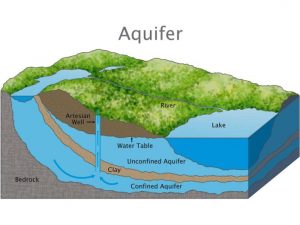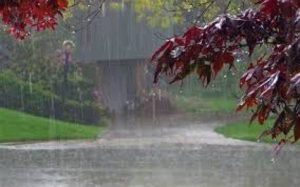 By Dr. P. K. Jena in Bhubaneswar, October 25, 2021: Water crisis is emerging as the most potent threat to human survival, but is least prioritized lies underfoot: groundwater. The World Economic Forum ranks water crises the world’s third greatest risk by impact, and extreme weather the top risk by likelihood.
By Dr. P. K. Jena in Bhubaneswar, October 25, 2021: Water crisis is emerging as the most potent threat to human survival, but is least prioritized lies underfoot: groundwater. The World Economic Forum ranks water crises the world’s third greatest risk by impact, and extreme weather the top risk by likelihood.
Aquifer depletion in agricultural regions could threaten nearly half the world’s food sources and deny 1.8 billion people reliable access to water by 2050, a study points out. The same study projects that aquifers in India’s Upper Ganges basin may be depleted within 25 years. This alarming vulnerability calls for immediate policy action from national and local governments.
Besides, India lies in water stressed region of the world. It accounts for 16% of world’s population living in less than 2.5% of global area and have just 4% of water resource of the earth. With rise in population along with industrial and other socio-economic developments, the demand for water in India is increasing very fast.
According to Central Water Commission (CWC) per capita availability of water for different purposes is decreasing very fast. It has been predicted that, per capita availability of water in the country will decrease from 1434 cubic meter in 2025 to 1219 cubic meter in 2050. As per the estimation of CWC, water resource potential of India is 1999 billion cubic meter (BCM), out of which the estimated usable resources are 690 BCM and 432 BCM as surface and ground water respectively.
In recent years, agricultural activities, urbanization and industrialization are taking place at a fast rate and as a result lot of water is being consumed. In addition to these, huge quantities of untreated solid wastes and effluents are being released from different sources to the surface water bodies and thus most of the surface water has been highly polluted. At present in India, nearly 65 – 70% of water is used in agricultural sector, 20–25% in industrial sector and the rest 10% is available for drinking and other domestic purposes.
 In order to meet these requirements, a lot of ground water is extracted without caring for replenishing it. It is reported that, the current ground water extraction is 249 BCM which is used mainly for irrigation and some for drinking purposes. Due to all these activities without any recharging, there has been a decline of ground water level in 61% of wells monitored by Central Ground water Board (CGWB).
In order to meet these requirements, a lot of ground water is extracted without caring for replenishing it. It is reported that, the current ground water extraction is 249 BCM which is used mainly for irrigation and some for drinking purposes. Due to all these activities without any recharging, there has been a decline of ground water level in 61% of wells monitored by Central Ground water Board (CGWB).
In addition to these, recharging of ground water in natural process has declined drastically due to fast deforestation particularly in catchment areas of the rivers along with disappearance of most of the wetlands. In view of these, it has been essential to increase the ground water resource by artificial recharging of rain water to the aquifers. The followings are some of the advantages in artificial recharging the aquifers.
The Advantages are:
Cost of recharge of aquifer is lower than that of surface reservoir.
Aquifer serves as distribution system.
No land is wasted for water storage purpose.
Evaporation and pollution are minimum,
Reduces flood hazards,
Enhances the productivity of aquifer,
Reduces soil erosion and
Mitigates the effect of drought.
In order to effectively recharge the rain water into the aquifers, it is necessary to take care of the following factors.
• Soil cover,
• Topography of the area,
• Depth of water table,
• Quality of water,
• Availability and amount of non-committed surplus monsoon runoff are to be obtained,
• The area contributing runoff including land use pattern, industrial, residential, green belt, paved areas, roof top areas etc. are to be calculated and
• Data regarding rainfall duration, general pattern and intensity of rainfall are to be found out.
The potential areas suitable for recharging the aquifer include:
• The area where the ground water level is declining on regular basis;
• Where substantial amount of aquifer has been desaturated;
• Places where availability of ground water is inadequate in off monsoon periods and
• Places where due to rapid urbanization and industrialization, infiltration of rain water into sub-soil has decreased drastically.
The methods of recharging aquifer have been suitably modified and are to be implemented systematically. The processes are summarized below.
Modified Methods of Recharging Aquifer are as follows:
Gully plug: These are built using local stones, clay and bushes across gullies and streams running down the hill slopes.
Contour Bund: Suitable in low rainfall areas where monsoon runoff can be impounded by constructing bunds on the slopping ground all along the contour of equal elevation.
Gabion structure: A small bund across the stream made by locally available boulders in a mesh of steel wires and anchored to the stream banks.
Percolation tank: Artificially created surface water body submerging in its reservoir a highly permeable land to percolate and recharge the aquifer.
Check dam: It is about 2m height constructed across small streams having gentle slope and at sites having sufficient thickness of permeable bed. Excess water is allowed to flow over the wall.
Recharge shaft: Dug manually with diameter more than 2m ending in more permeable strata below the top permeable one and then back filled with boulders followed by gravel and coarse sand.
Recharge shaft in water tanks: Shaft of 0.5 to 3m diameter and 10 to 15m deep with top of the shaft above the tank bed level preferably at half of the full supply level to allow clean water to recharge the aquifer.
Dug well recharge: The runoff water guided through a pipe from desilting chamber through coarse sand, pebbles and gravel to the bottom of the well.
Subsurface dykes (underground dam): A trench of 1–2m wide is dug across the breadth of the stream down to impermeable bed and filled with clay or brick / concrete wall up to 0.5m below the ground level.
 Besides, the rain water should be collected in wetlands for natural recharging of aquifers. Thus, by adopting rain water harvesting both on surface as well as recharging the aquifer by above processes, it would be possible to provide water hungry India enough water particularly for agricultural and domestic purposes. Industries should make separate arrangements for meeting their water requirements.
Besides, the rain water should be collected in wetlands for natural recharging of aquifers. Thus, by adopting rain water harvesting both on surface as well as recharging the aquifer by above processes, it would be possible to provide water hungry India enough water particularly for agricultural and domestic purposes. Industries should make separate arrangements for meeting their water requirements.
In the world, India is considered as a water stressed country and the situation is getting worse in recent years due to various anthropogenic activities. The annual per capita availability of water in India was 6008 cubic meter when the country achieved independence in 1947 and it came down drastically in the next 50 years to about 2260 cum in 1997 and now it is only 1800 cum. If no serious attempt is made in harvesting rain water in the ground, developing the wetlands, preventing water pollution and managing the water resource scientifically, it is estimated that, the availability of water per capita will fall only to 750 cum per capita by the next 50 years. Unless appropriate measures are taken to increase the fresh water resources, the country will head towards a disastrous situation.
It is heartening to note that, recently the Government of India has launched the ‘Atal Bhujal Yojana’ which aimed to improve the ground water resource and its management. This has also been approved by World Bank in 2018. The Govt. of India with full o-operation of the state governments should take necessary steps to increase ground water resources and scientifically managing the increasing needs of water in the country.
• Former Director General, Council of Scientific & Industrial Research, India



Leave a Reply
Be the First to Comment!